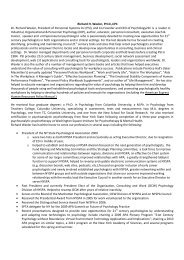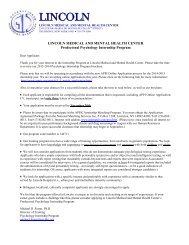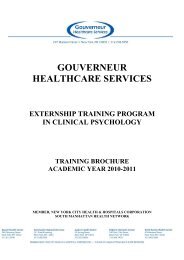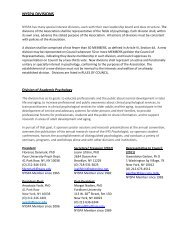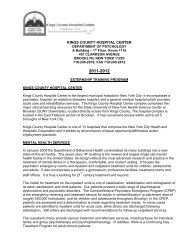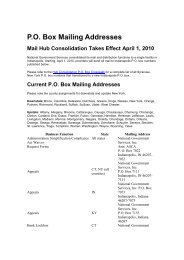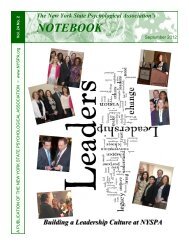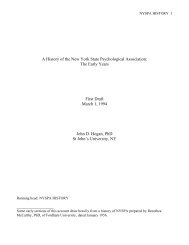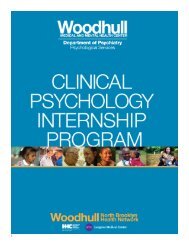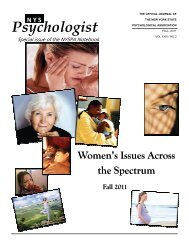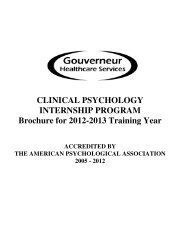Abridged Guidelines for Parliamentary Procedure - New York State ...
Abridged Guidelines for Parliamentary Procedure - New York State ...
Abridged Guidelines for Parliamentary Procedure - New York State ...
Create successful ePaper yourself
Turn your PDF publications into a flip-book with our unique Google optimized e-Paper software.
6and need not be rescheduled to comply with the requirement of a legal meeting. Themeeting is legal; the conduct of most business without a quorum is not.Organizations should state in their bylaws the requirements <strong>for</strong> a quorum, includingthat <strong>for</strong> standing committees, otherwise a quorum is assumed to be a majority of themembership.A clearly worded agenda should always be distributed prior a meeting being held.This agenda should include the names of any speakers.The Main Motion:A Main Motion is the statement of a request <strong>for</strong> action, an idea <strong>for</strong> evaluation, or theintroduction of a resolution stating the group’s position on a subject. It should be statedin the affirmative. A main motion is debatable, it may be amended, it almost alwaysrequires a majority vote to pass, and the vote may be reconsidered. To prevent confusion,only one main motion may be considered at a time.Examples: I move that Executive Council authorize a donation of twenty dollars <strong>for</strong>the Red Cross.ORDINARY MOTIONS:To Amend:Resolved that this Association expresses its appreciation to Dr. Jill Jones<strong>for</strong> her donation to the development fund.An amendment is a change in the wording of a amendable motion, usually a mainmotion, to make it express more accurately what the majority wants it to say, be<strong>for</strong>e it isvoted on. To amend is debatable, amendable, and requires a majority vote.Examples: I move to delete all after “Tuesday morning” in the motion.I move to add to the motion the words “at the discretion of the President.”The following ordinary motions may be amended:To Amend – if the change proposed is accepted without <strong>for</strong>mal motion and vote.To Refer – as to size of committee, selection process, deadline <strong>for</strong> report, etc.To Postpone – as to the limits of postponement.To Limit (Extend the Limits of) Debate – as to number of speakers.To Recess – as to duration of recess.One may not amend an amendment. The amendment is voted on. If passed, a newamendment may be proposed to the then existing main motion. Thus, only one proposedamendment is pending at a time.6



